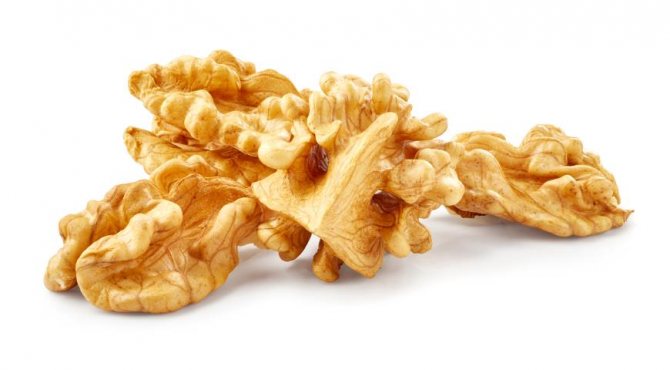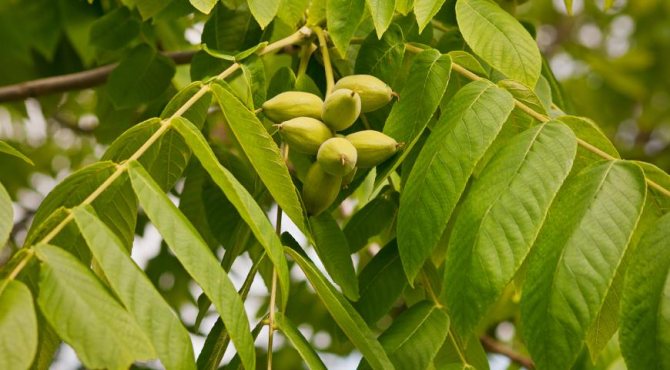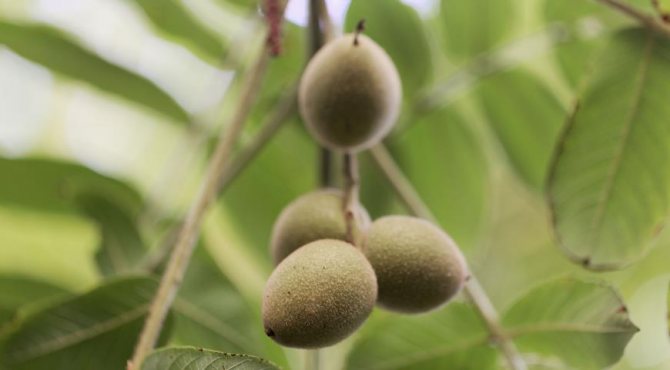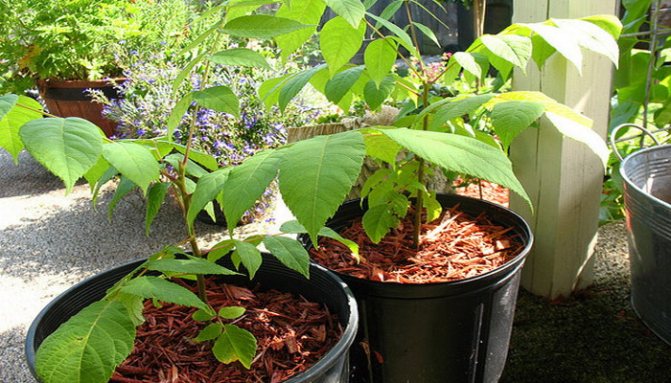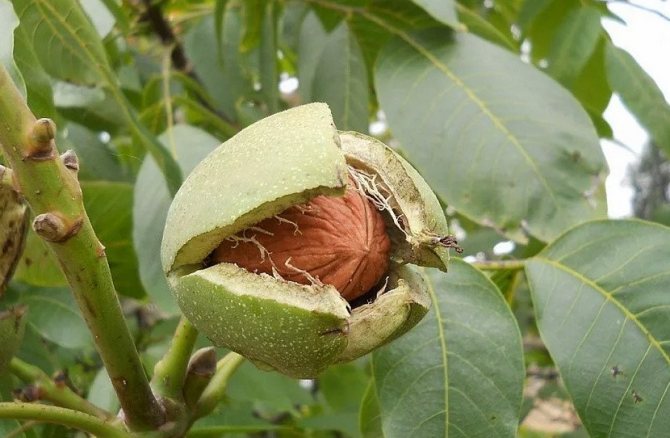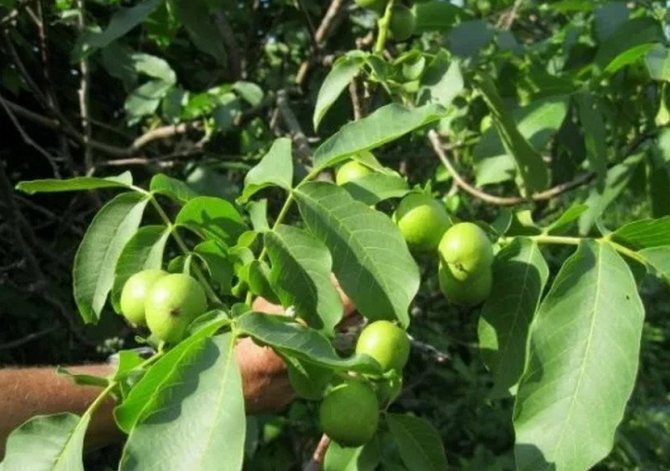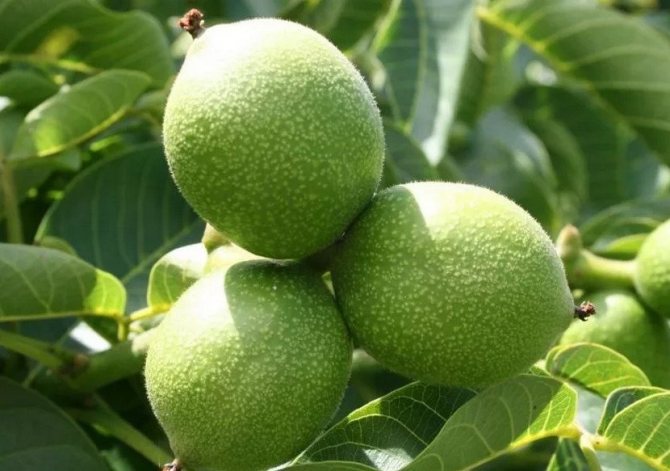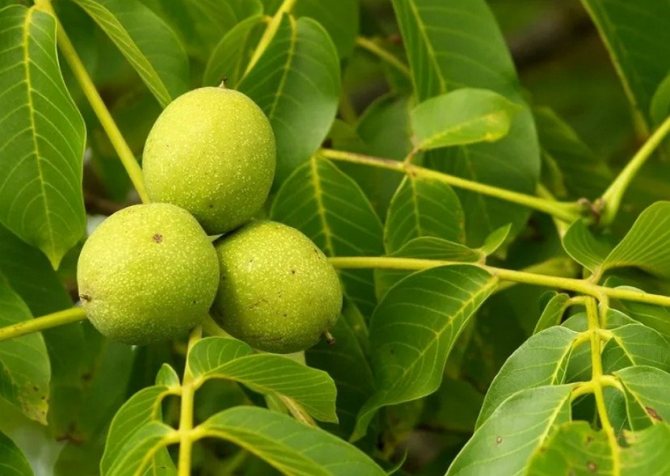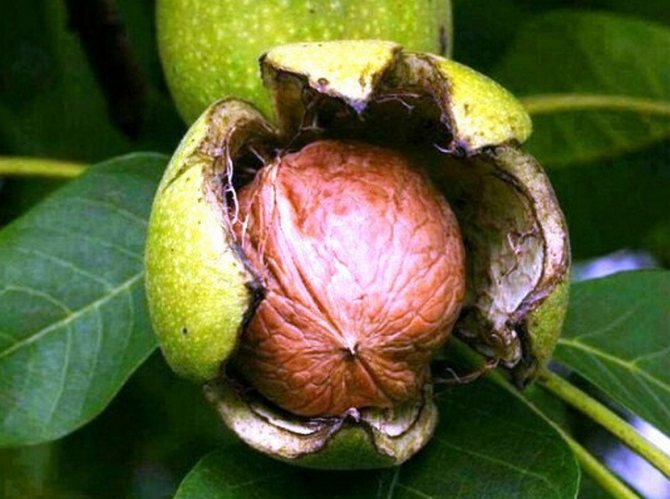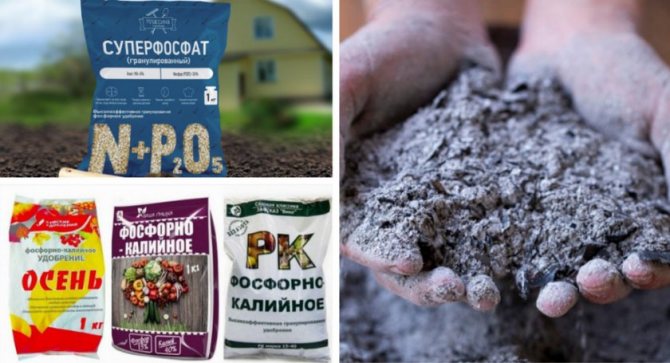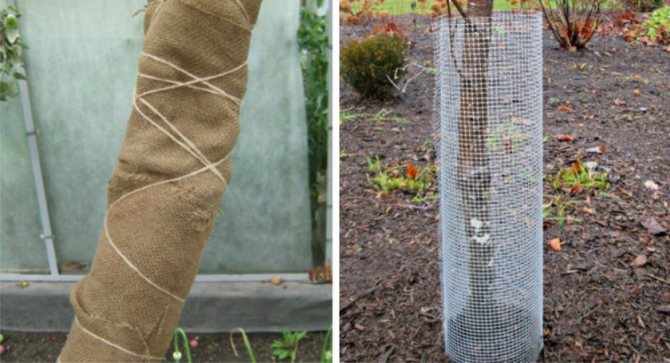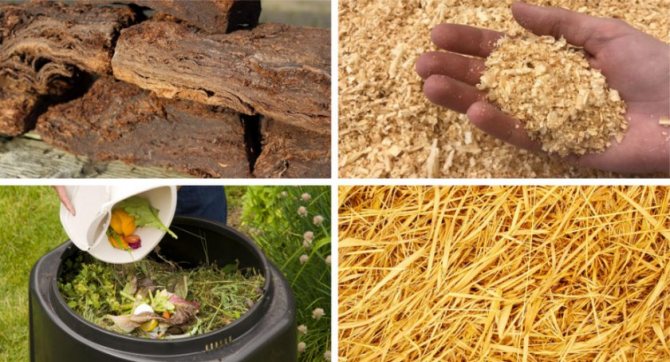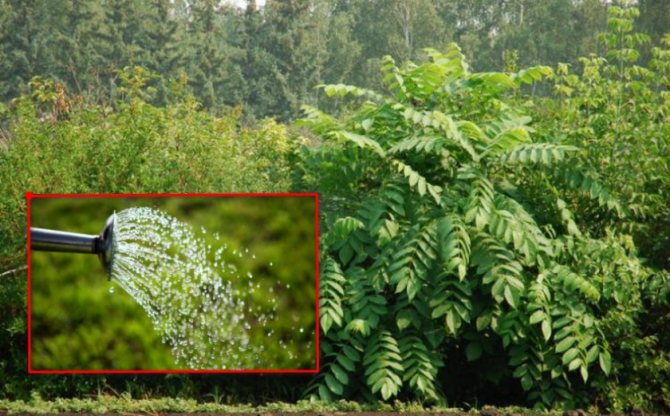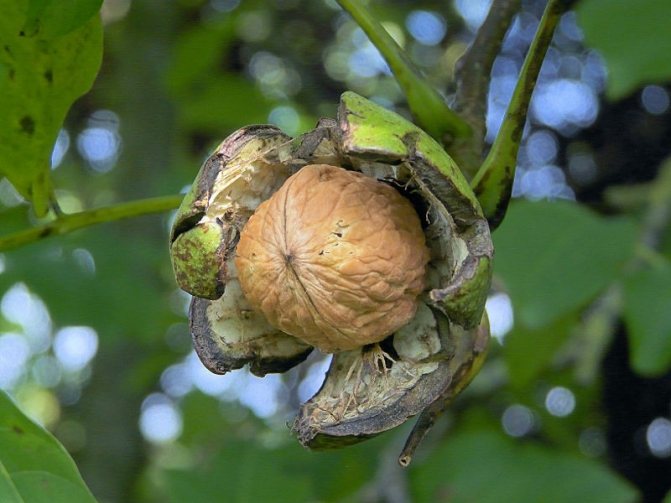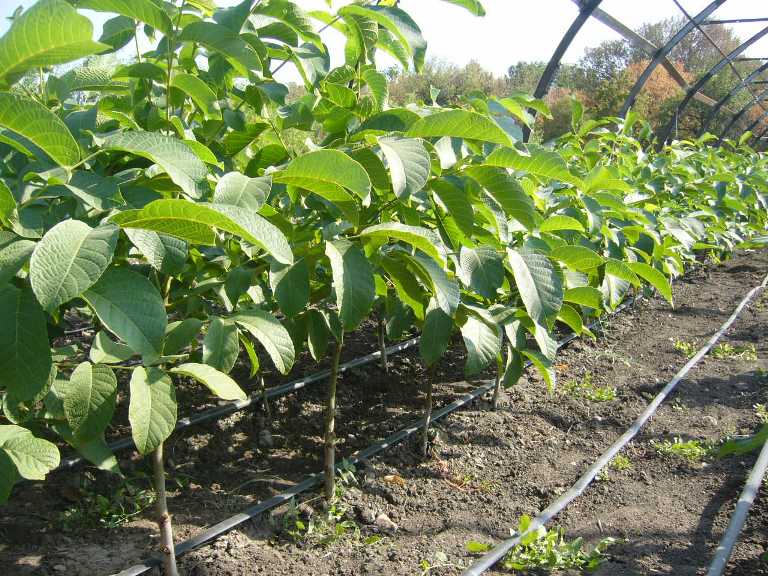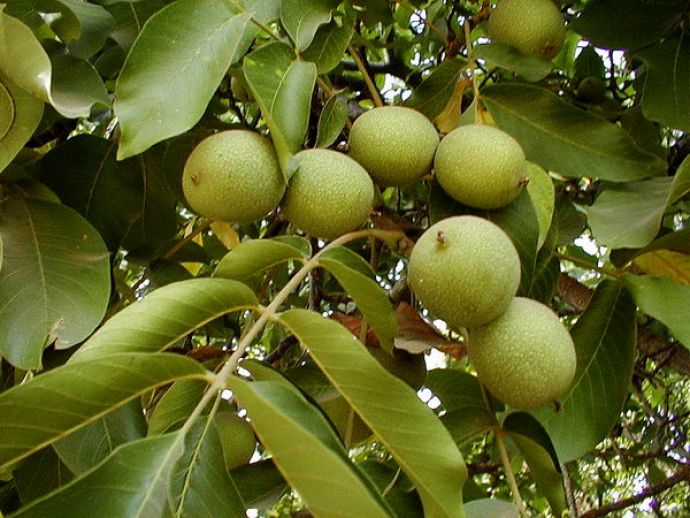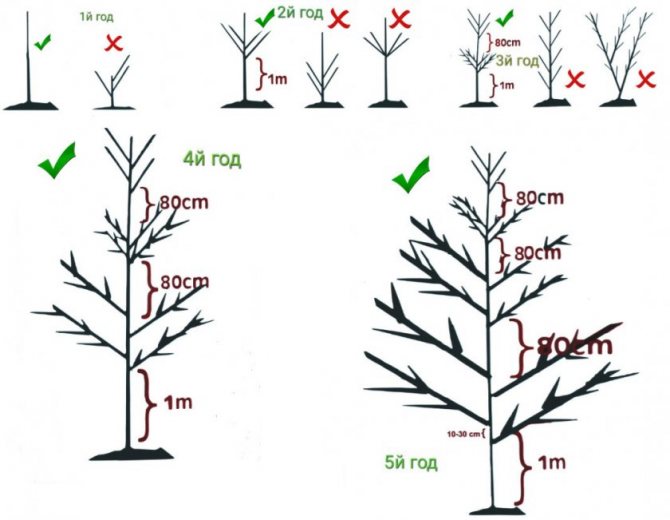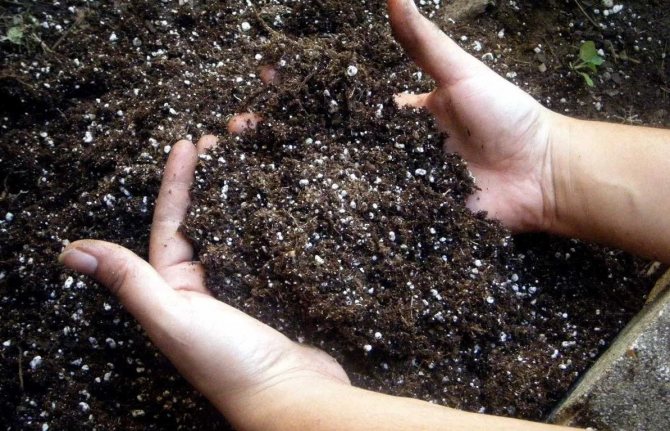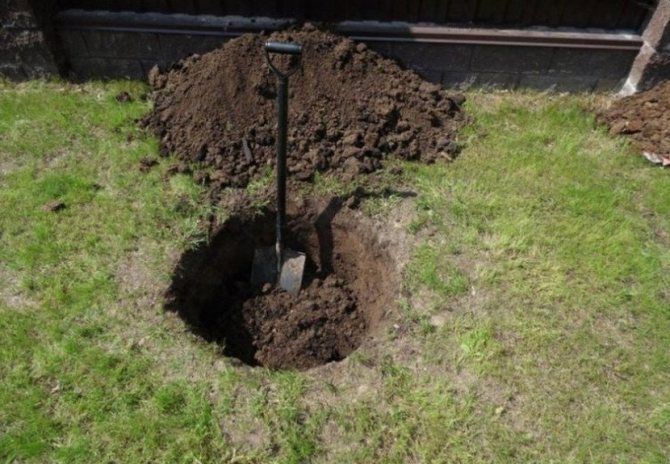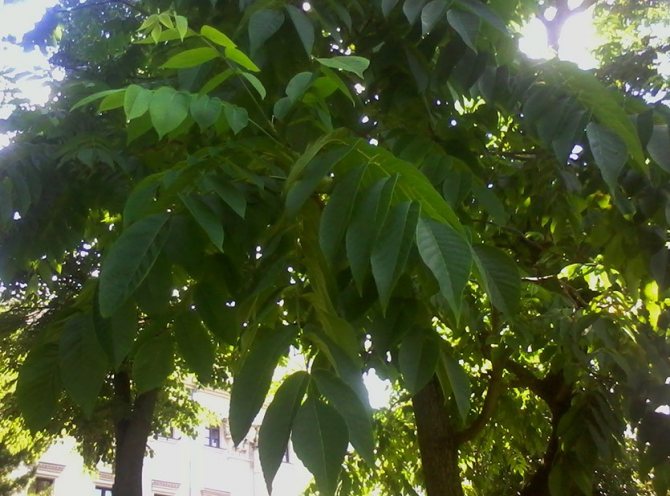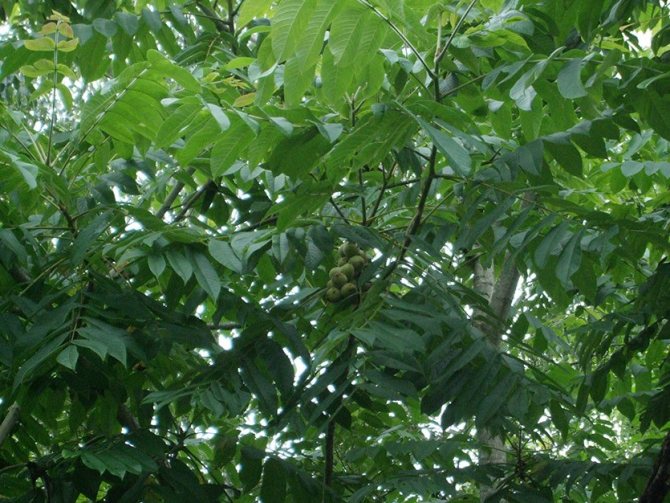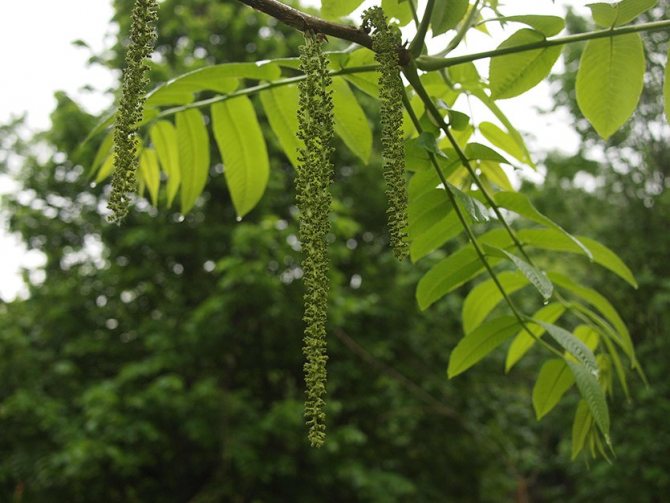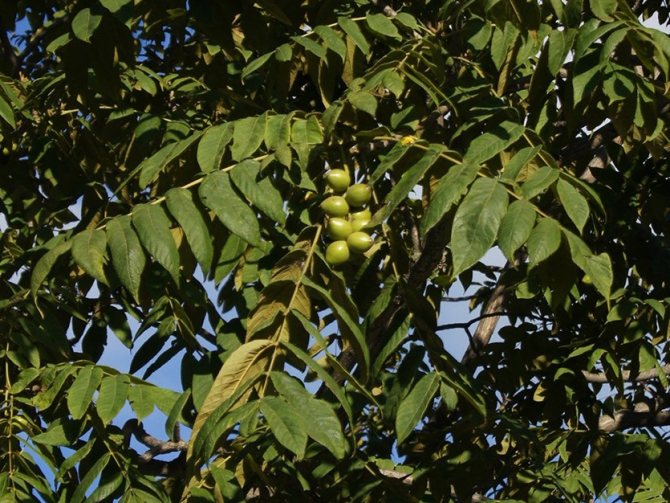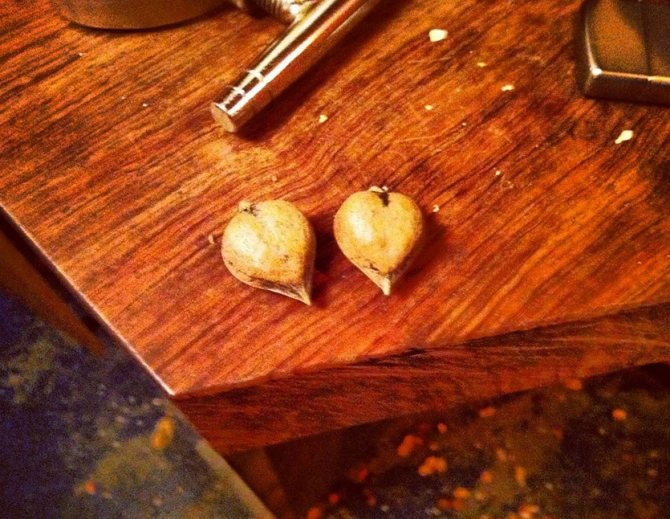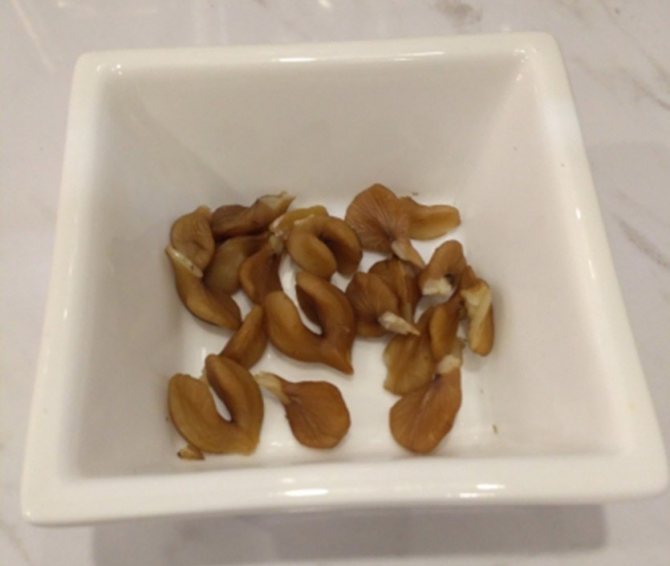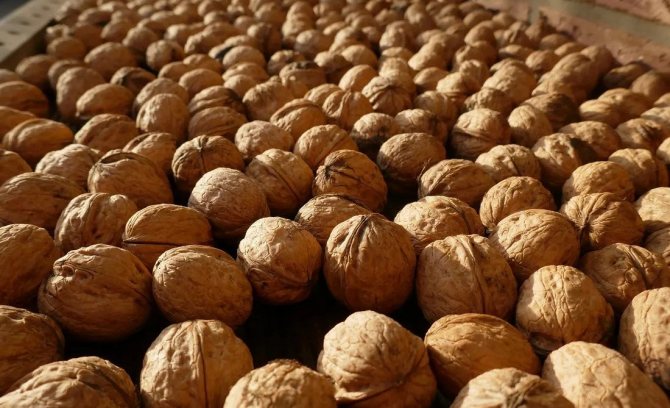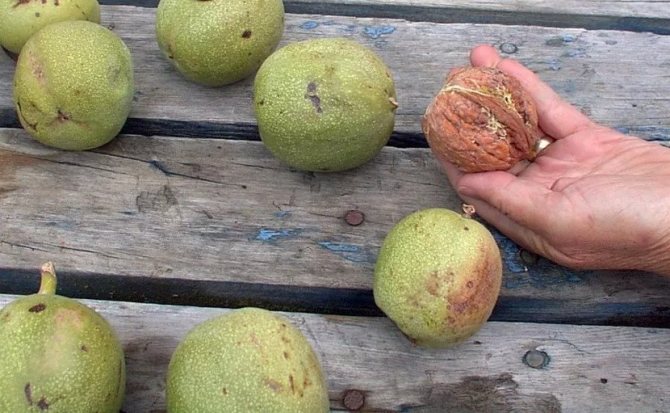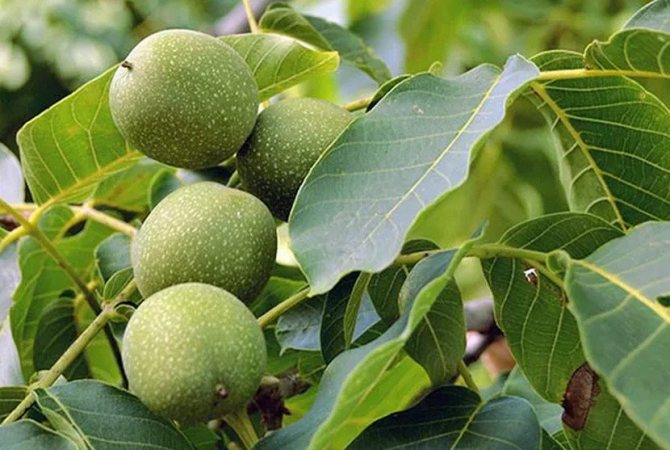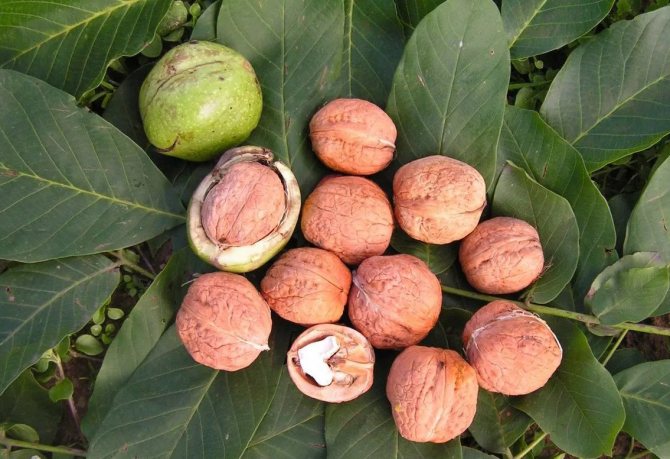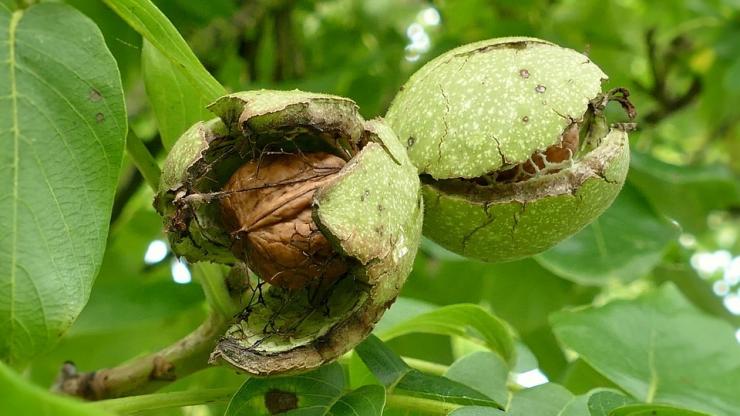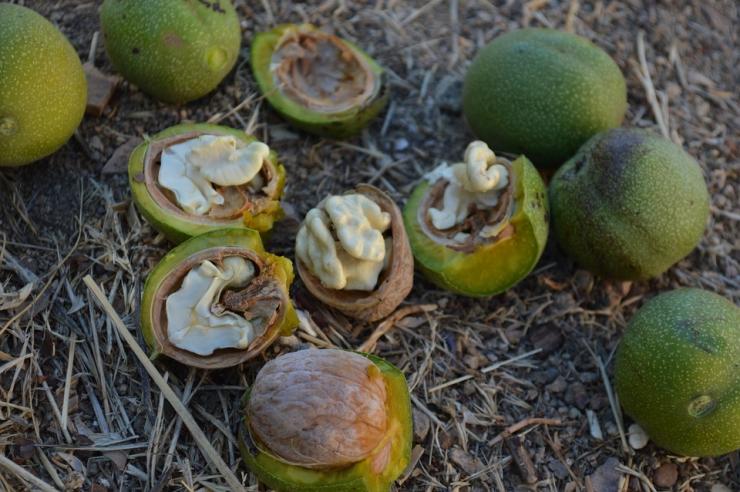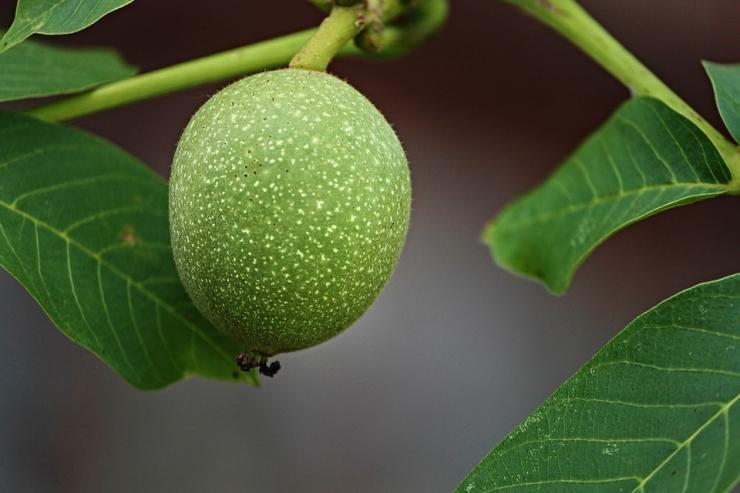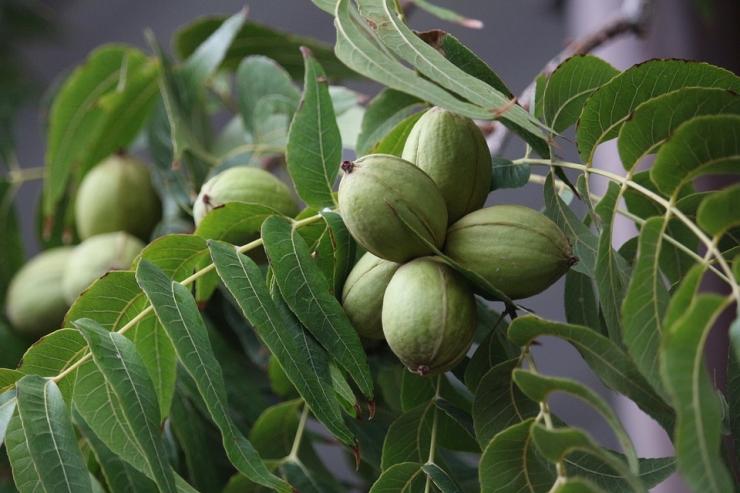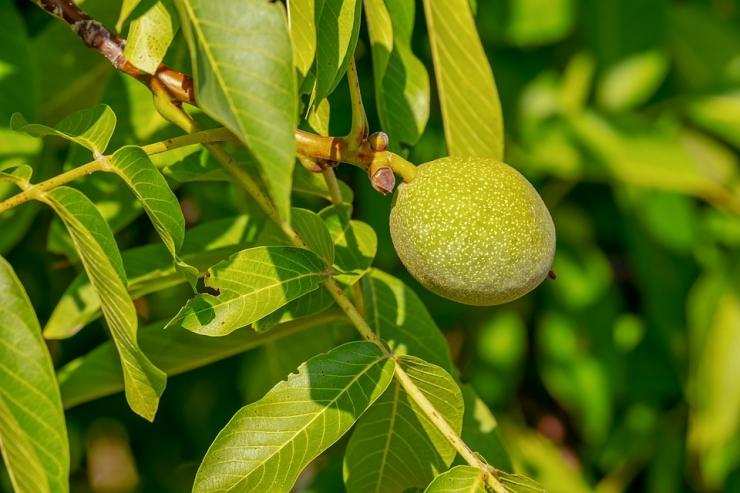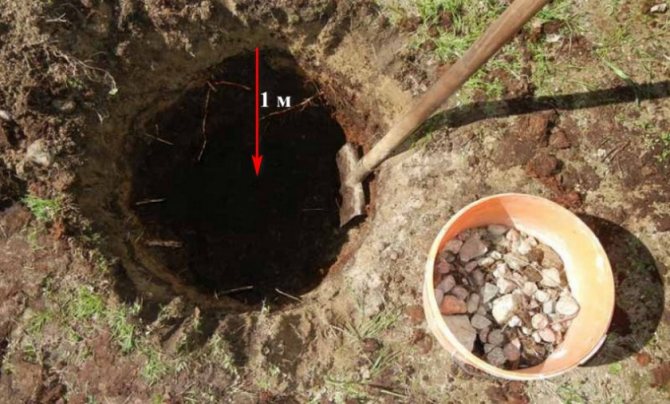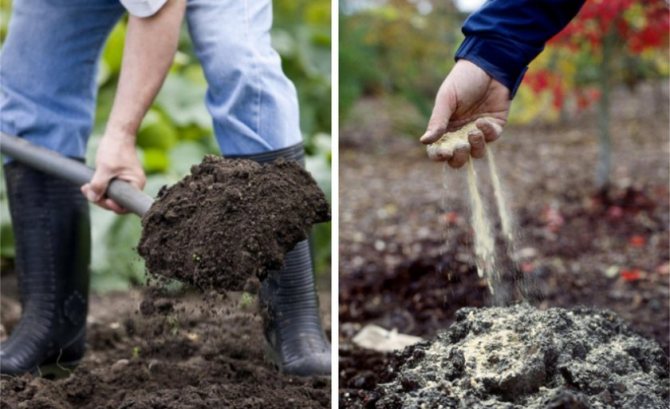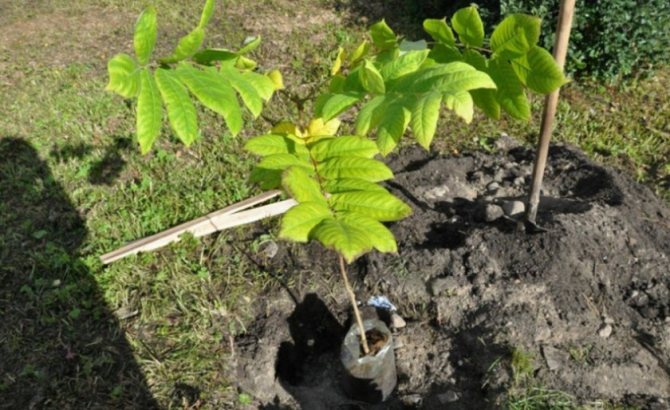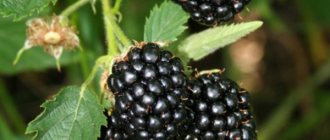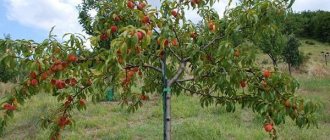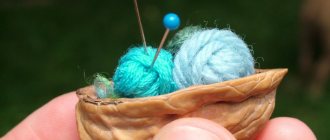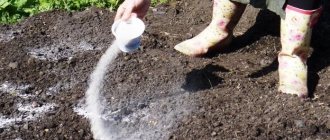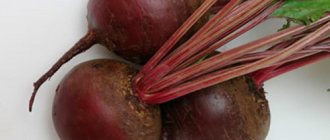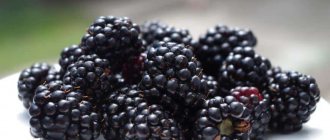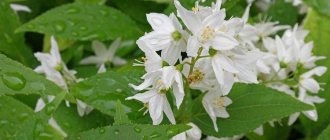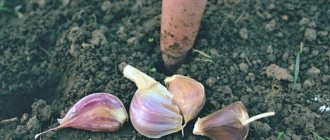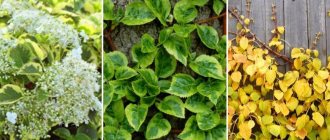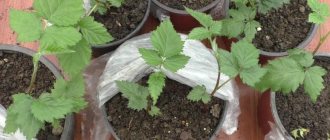Nut fruit selection
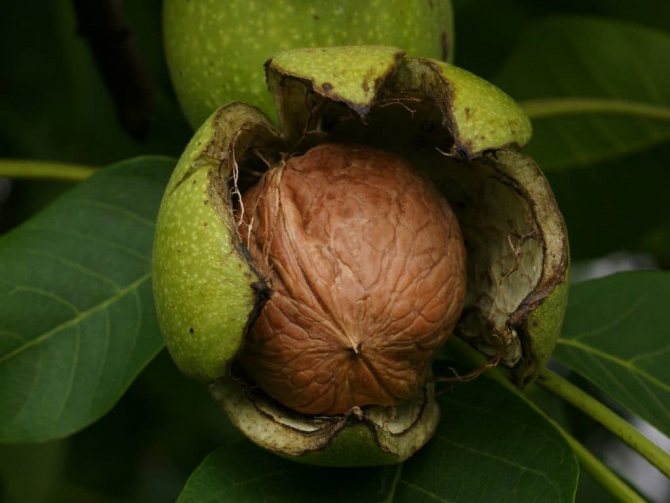
The process of growing a plant directly depends on the quality of the planting material. The fruit must be fresh. Do not use a nut that has been dried or heat treated. It should be borne in mind that old nuts sprout much worse.
Therefore, you need to buy fruits for planting in September. It is not worth purchasing store-bought nuts, since there is no confidence in their freshness and lack of processing. The ideal solution would be nuts that were harvested by yourself.
It is important that the fruit is ripe. It should be free of stains or damaged areas. The shell should be fairly thin. To grow a culture from a fruit, you must choose the largest specimens.
Before planting, the nuts from the harvested batch are worth trying. They must have excellent taste. When choosing a variety, preference should be given to those that grow in this area.
Tips and tricks from experienced gardeners
In order to get the harvest and choose the right variety, the following recommendations must be followed to prevent possible problems:
- The nut has a developed root, therefore, a distance of at least 2-3 meters must be maintained between two seedlings.
- It is necessary to plant a walnut with pre-germinated seeds or ready-made seedlings. This will reduce the risk of death of the planting material and preserve the taste of the plant.
- For a small area, it is necessary to use low-growth plants that do not require maintenance. The advantage of such plants is the simple harvesting process.
In the first year after planting the seedling, it is necessary to observe regular watering and use fences so that the sprout is not damaged by the wind.
Variety selection
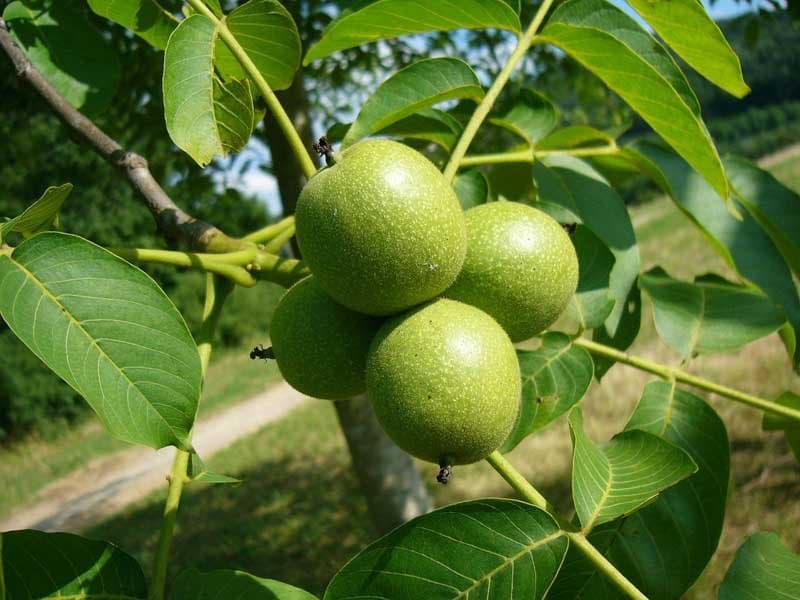

For cultivation in the Moscow region, you should pay attention to the varieties Sadko, Ideal, Velikan, Urozhainy. There is also a special variety called Moscow Region. It is characterized by resistance to frost. The plant gives an early harvest and has fairly large fruits.
Relatively recently, breeders managed to develop a new crop variety - Astakhovsky. It is characterized by excellent winter hardiness. In addition, the plant is resistant to pests and diseases. The crown of the tree is perfectly restored after frost. The culture is able to withstand temperatures down to -37 degrees.
What does it mean - a winter-hardy and frost-resistant variety?
Frost-resistant variety - a variety that is resistant to negative temperatures. This characteristic determines the ability of plant cells to survive dehydration, retain supercooled water and avoid crystallization of water inside tissues. Each cell of the tree has its own border of dehydration and compression, its transition leads to the death of the plant.
Advice
Frost resistance is at the genetic level, but it can change due to adaptability. It is this variability that makes it possible to breed hybrids and new varieties with different properties.
Winter hardiness is a broader concept that defines the ability of a variety to withstand various weather conditions in winter and early spring:
- thaws and frosts;
- winds;
- rain.
This indicator is influenced by two factors:
- tree age - an adult healthy tree is more winter-hardy than a seedling;
- care - the better it is (subcrusting, pruning, protection from pests and diseases), the higher the winter hardiness of the crop.
Preparing nuts before planting
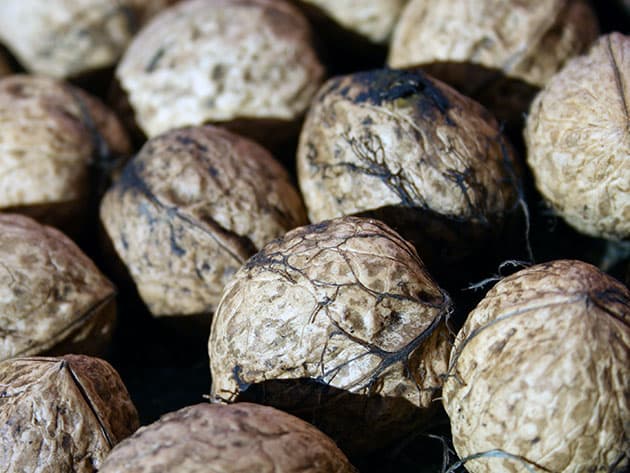

Before planting, the fruits should be prepared. To do this, they are exposed to cold, water, ultraviolet light. If the plant is planned to be planted in the spring, stratification must be performed.
To do this, the fruits should be immersed in a container with wet sand, and then taken out to a place with a low temperature - 0- + 5 degrees. This could be a basement or a refrigerator.
Stratification will take 3-4 months. The nuts should be removed and ventilated every 3-4 weeks. It is recommended to moisten the sand at this point. After stratification, the nut is placed back in the soil.
Also, before spring planting, the fruits can be placed for 1 month in a room with a temperature of less than +10 degrees. Then soak in a container of room temperature water and leave for 2-5 days.
It should be borne in mind that only those fruits that have sunk to the bottom can be used for planting. Any nuts that remain on the surface can be discarded.
After the specified time has elapsed, only those fruits are removed from the container, the flaps of which have moved apart and a root has formed. To make it grow and become stronger, the nuts are placed in a container filled with wet sand or sawdust, after which they are taken out into a warm room. The temperature in it should be + 25-28 degrees.
After 10 days, the roots will grow to 0.5-1 cm. When this happens, the containers are transferred to a cool place. They must be there before planting the crop.
Both peeled and unpeeled nuts are allowed to grow. At the same time, the former have a faster germination. To cleanse the fruit, carefully remove the upper shell. This must be done so as not to touch the inner layer.
It should be borne in mind that the manipulation must be carried out with gloves, otherwise the green layer will leave spots on the skin, which will be very difficult to get rid of.
If the inner shell is damaged, the nut will not be able to germinate or the sprout will get sick.
When planting in spring, dry the nuts thoroughly. To do this, they are laid out horizontally in 1 layer and exposed for 2 days in the sun. Then the fruits are sent for 2-3 days to a shaded place. This will help dry them out. It is strictly forbidden to use special devices for drying.
If planting a nut at home is planned in the fall, stratification is not required. Also, the fruits can not be germinated or dried.
Grow a tree from a nut
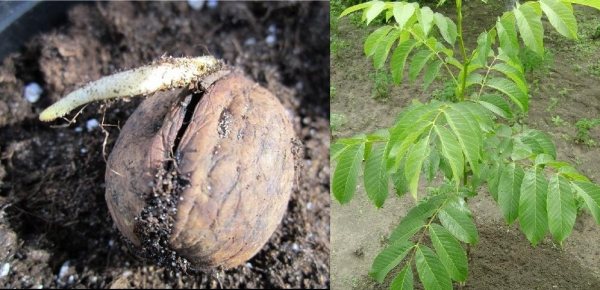

The technology of growing a walnut from its fruit is not complicated, but requires its own approach.
If you become the owner of a walnut fruit in the fall, then you can immediately start planting it. To do this, dig a yaku in a secluded place, put sand, gravel, humus on the bottom and put a nut on top. It is desirable that it be in a lateral position underground.
Cover the hole with earth and water. Winter frosts will carry out the process of cold stratification, and by spring the nut will germinate. Sometimes germination occurs not in the spring of this year, but in the spring of the future, so there is no need to despair in advance. The landing site must be protected and closely monitored.
Those who are engaged in the cultivation of walnut seedlings do not bury the nuts, but simply spread them on the surface of the soil, and observe in early spring. Those nuts that have shown sprouts are planted in a pre-prepared trench, and those that have not sprouted are left until next year or disposed of.
Selection of containers
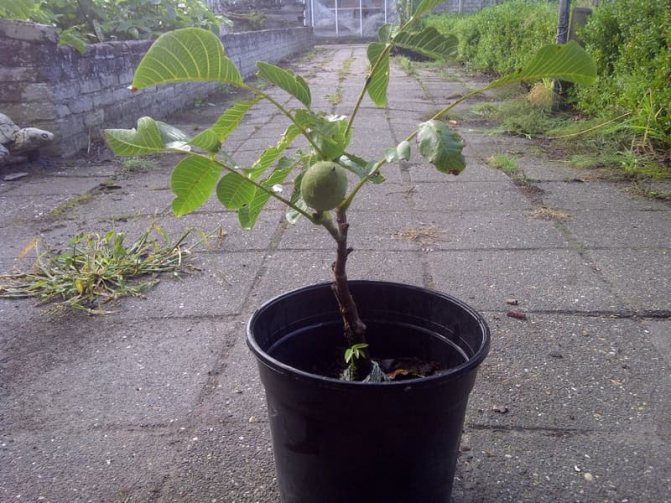

Before growing a nut in the Moscow region, you need to choose the right container. To do this, you can take any deep pot that has good drainage.
The first container should have a diameter and depth of about 25-30 cm. It is these parameters that will ensure the freedom of the developing root system.
When grown in a pot, the crop is limited in growth.Therefore, seedlings 1-3 years old should be constantly replanted. It is recommended to do this once a year. In this case, it is recommended to choose a pot 8-9 cm larger than the previous one.
Growth features
Growing walnuts is no more difficult than apple trees. However, it must be understood that planting a nut has its own characteristics. The walnut tree is powerful, up to 8 m in diameter and up to 8 in height. When purchasing a 2 - 3 year old sapling, we must imagine what the tree will be like in 5 - 7 years, and what it will be like in 20 years.
A special feature is that the walnut tree cannot be planted near buildings. Its wood is very fragile and tends to break off with strong gusts of wind.
A huge tree also gives a huge shadow cloud, which can interfere with both your garden crops and those of your neighbors.
There is also a peculiarity in the sense that the tree secretes phytoncidal substances, and not every plant wants to grow near the nut.
How to grow at home?
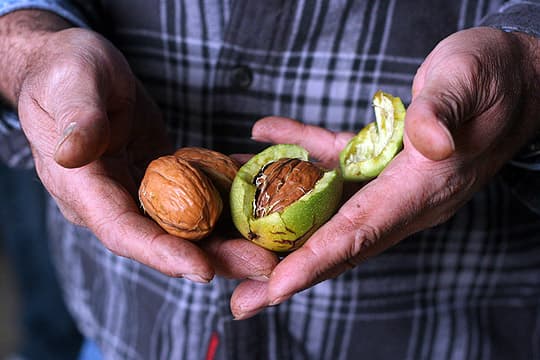

To grow a plant from seeds, certain guidelines must be followed.
After the emergence of a sprout, the following conditions should be observed:
- At the initial stage, the seedlings are grown in plastic cups. It is advisable to give preference to a container with a volume of 0.5 liters.
- The bottom of the cup must be pierced with a hot awl to get a hole. This will provide the necessary drainage and prevent the seeds from rotting due to the accumulation of excess moisture.
- Fill the container with garden soil. It is recommended to plant the nut to a depth of 5 cm. On top, if necessary, you can pour more soil. After that, the surface should be slightly crushed.
- Water the planting and transfer the container to the balcony. The seeds need light. However, direct sunlight is contraindicated for the plant.
- Seedlings should be watered sparingly. This should be done 3-4 times a week in small portions.
- When planting a culture in autumn in February, the glasses must be moved into the house and placed on the windowsill.
Usually, after moving the seedlings into the room, it rises in 2-3 weeks. When the seedling reaches 10 cm, it can be transplanted into a pot. Usually use containers with a capacity of 1.5-2 liters.
The subsequent care of the culture remains the same. In early April, when the temperature outside the window rises, the plant should be returned to the balcony.
This will help you adapt to new conditions and prepare for planting outdoors. This manipulation should be carried out in May, when the ground and air are well warmed up. Seedlings by this time will grow up to 15-20 cm.
Does walnut grow in the Moscow region
Moscow (Moscow region is conventionally called the Moscow region) climate is temperate continental. Seasonality is clearly pronounced. It is warm in summer and cold in winter. In the eastern and southeastern regions, continentality is more pronounced. This is manifested by higher temperatures in summer and very low in winter.
The period with an average daily temperature below 0 ° С lasts within 120-150 days. Snow usually falls in November and melts in April. On average, in winter, the temperature is kept within -25 ° С, in rare years it can drop to -45 ° С, but for a short time. In summer, the average temperature is + 25 ... + 30 ° С, the highest is + 39.5 ° С.
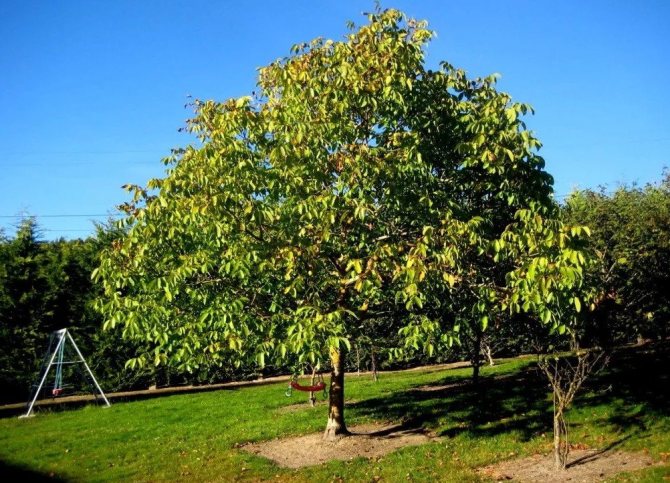

Taking into account the peculiarities of the climate, walnuts can be cultivated in the Moscow region, since they are quite hardy.
The roots of plants go deep underground, which protects them from freezing even in severe frosts. Nuts begin to bloom in May, and during this period in the areas under consideration it is already warm enough, so there is no risk of kidney freezing due to recurrent frosts.
For a long warm period, the fruits of the trees have time to fully ripen. The main thing is to choose the right variety. It is better to give preference to cold-resistant crops, which have been bred in sufficient quantities over many years of selection.
Did you know? Protein, which is contained in the composition of nuts in terms of nutritional value, is absolutely not inferior to dairy and animal, and is also easier for the body to assimilate.
Seedling care at home
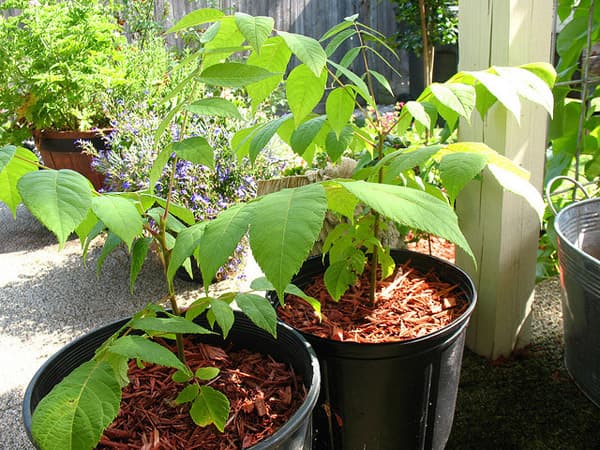

In order to get a powerful and viable plant, during the period of caring for walnuts, you need to follow these recommendations:
- Culture needs great lighting. If the seedling is constantly in the shade, it can get sick and even die. Moreover, this will happen in the active phase of growth.
- The plant needs systematic moisture. Watering the nut should be constantly to avoid drying out of the earthy coma. It should be borne in mind that the culture is less sensitive to drought than excess moisture. However, too much zeal is also not recommended. Otherwise, there is a risk of root rot.
- In warm weather, the container with the plant must be taken out into fresh air. However, it is important to ensure that the seedling is not exposed to drafts. In hot weather, wrap the container with nuts in a damp cloth. This will help prevent overheating of the root system. At high temperatures, the pot can be immersed in cool water.
- The soil under the plant should be mulched. For this, peat, moss, rotted organic fertilizers are used. If necessary, the mulch should be renewed.
- Fertilize the nut with top dressing. It should contain a lot of potassium. The procedure should be carried out every 2 weeks. The manipulation is carried out systematically while the crop is in the growing season.
When placing a seedling in the open air, it is important to ensure that it is not exposed to pests or infectious diseases. The walnut moth and garden aphid are of great danger to the culture. Also beware of the American butterfly, root cancer, brown spot.
It should be borne in mind that culture is developing rapidly. This leads to the appearance of a spreading crown. To limit the size of the tree, you need to prune it. The crown of a pot nut should be formed for 3-4 years.
The first pruning is done at 2 years old. From the age of 5, it is recommended to remove extremely weak and thin branches. They also get rid of escapes that grow vertically. The manipulation should be performed twice a year. Pruning is carried out in early spring and in the second half of autumn.
During the first 4 years of development, the tree needs to be planted annually in a new pot - it should be 8-10 cm larger than the previous one. At this time, you can renew the roots by removing old and decayed fragments. When the nut reaches 5 years of age, it can be transplanted only once every 3-5 years. This is done by pouring new soil under the base of the trunk.
Pests and diseases
As a result of improper care, soil depletion or changes in climatic conditions (prolonged rains, intense heat, late spring frosts, etc.), the following diseases can affect the walnut:
- brown leaf spot - eliminated by spraying 1% Bordeaux liquid concentrate at least 3 times with a break between manipulations of 10 days;
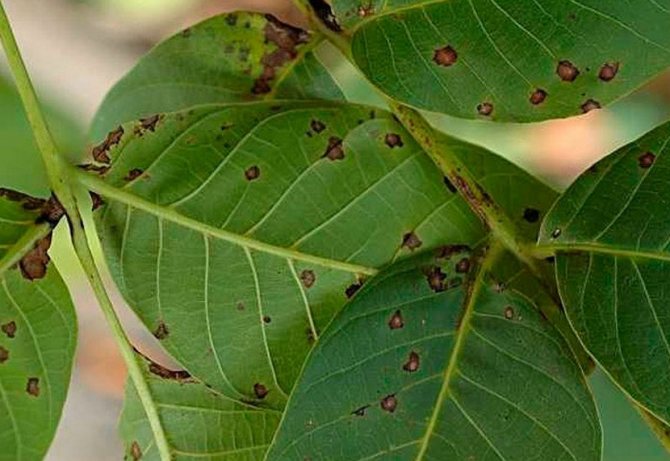

- fire blight - in the early stages it is treatedFitolavin»(Use according to the instructions), in the later stages you will have to remove the diseased plant from the site;
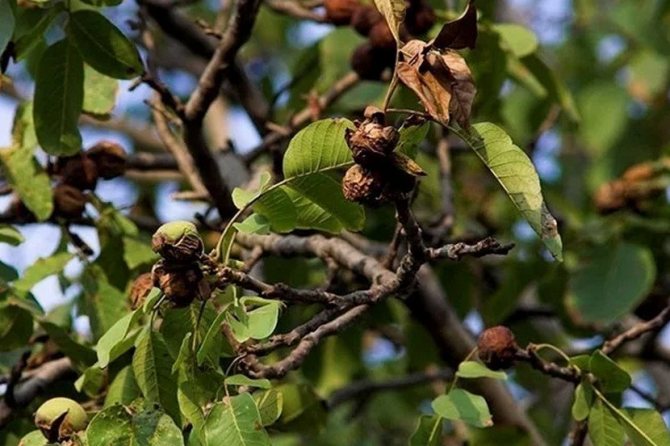

- bacteriosis - the development of the fungus is stopped by treatment 3% Bordeaux liquid solution in combination with 1% urea;
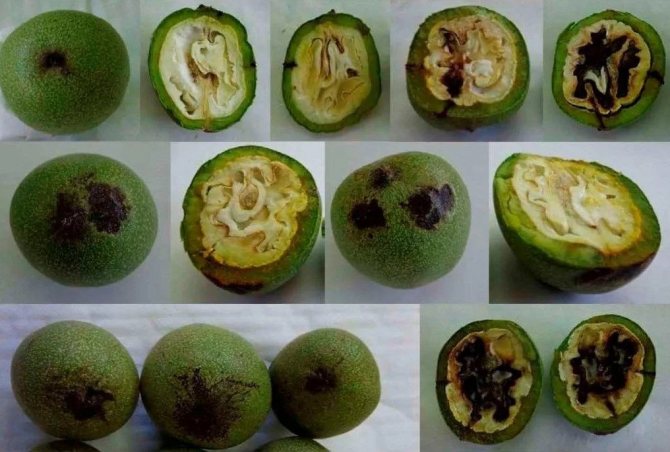

- root cancer - manifested by the appearance of growths on the roots, usually the disease is identified late, so the plants have to be destroyed.
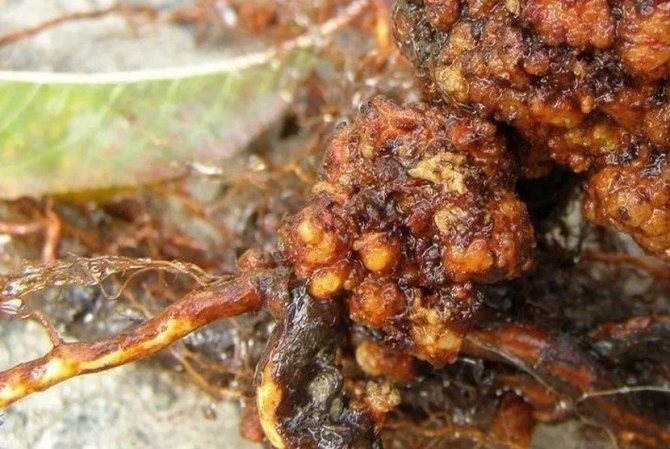

Of the pests on nuts, aphids, moth, American white butterfly and sapwood most often settle. When parasites appear, the lesions should be immediately eliminated by cutting off the damaged branches. Then carry out the treatment with "Bitoxibacillin" according to the instructions.
Did you know? The nut kernels contain magnesium.This causes mild sedative and hypnotic effects, and also helps to reduce the negative effects of stress on the human body.
Planting and growing a nut on your site in the Moscow region will not be difficult even for a beginner in gardening. Trees require minimal maintenance, are rarely affected by diseases and pests, and also yield a large yield of healthy and tasty fruits.
How to grow outdoors?
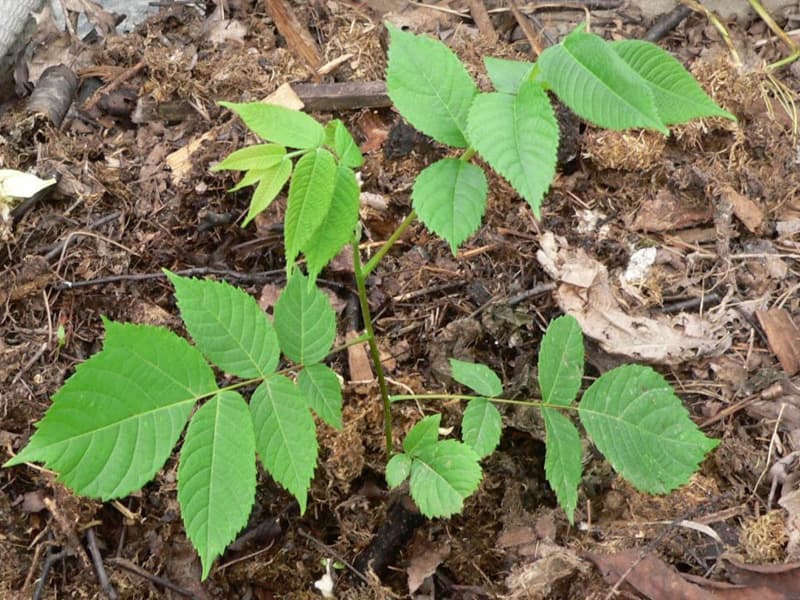

When planting a plant in open soil, a number of recommendations should be followed. Of no small importance is the observance of the rules of care after planting.
Seat selection
To get a strong and viable plant, you need to choose the right place for it. Walnuts should not be planted near residential buildings or other buildings. Over the years, the root system of the plant will break even the most powerful foundation.
It is also not recommended to do long-term planting near the walnut tree. The plant creates a thick shadow, and therefore not every culture will survive near it.
Soil preparation
For the plant to take root well, it is necessary to properly prepare the soil. The culture loves nutritious soil. It is important that it is loose enough. The planting pit should be fed with manure. Organic fertilizer should be mixed with wood ash and superphosphate.
Landing dates
You can transplant the plant in spring or autumn. It should be borne in mind that the nut can be planted exclusively in the warm season. In order for the culture to take root, you need to monitor the temperature indicators of the air and soil.
If frosts can be observed during March and April, planting a nut is not recommended. Exposure to negative temperatures will lead to the death of the plant's root system.
How to plant?
To plant a culture, it must be carefully pulled out of the pot so as not to damage the roots. In this case, the taproot should be cut off by a third. This will ensure more active development of the lateral roots.
The seedling should be lowered into the hole so that the root collar is located 3-4 cm higher than it. The hole with the tree should be covered with soil, compacted and watered well. To avoid breaking the plant, it is tied to a peg.
Watering
Young, freshly planted seedlings require abundant and regular watering. One tree, as a rule, consumes 15 - 20 liters of water weekly, if there is not enough natural precipitation.
A mature tree that has long been rooted and started to grow requires less water supply. However, its roots are located deeper and with prolonged drought it is necessary to make holes with a drill and pour water into them. This procedure will promote better water permeability to the root system.
Fruiting trees, which over the years of growth have managed to build up the root system, no longer require watering.
THE MOST FROST RESISTANT NUTS
Wild species of the genus Juglans are also promising for central Russia - they are more winter-hardy than walnuts. These are black, rocky, heart-shaped, ailantholist (Siebold) nuts, as well as gray, Manchu nuts. The kernel yield in the former is 23–50%, in the latter 13–19%. However, we managed to obtain the shape of the Manchurian nut with a kernel yield of up to 25–27%. The trees began to bear fruit at the age of 7 and endured all the harsh winters without damage.
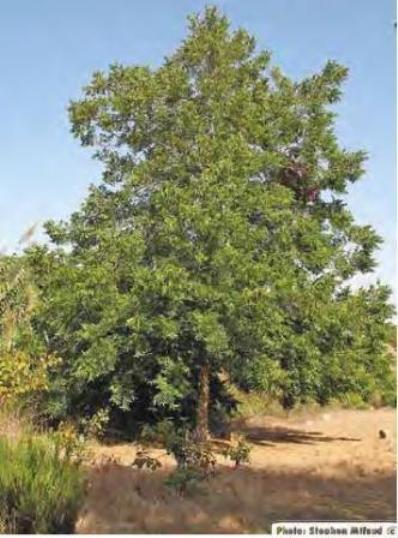

Pecan, or Illinois hazel (Carya Illinoensis) in the suburbs withstands frosts down to -35. -37 ° C
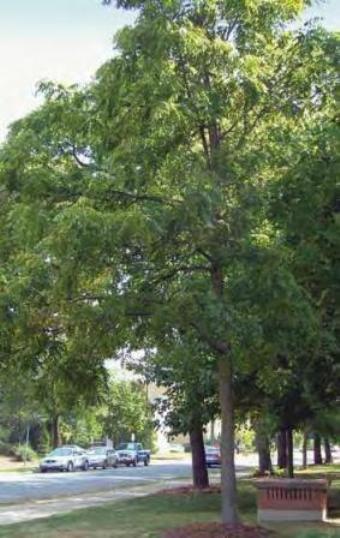

Black walnut is frost-resistant, tastes second only to walnuts
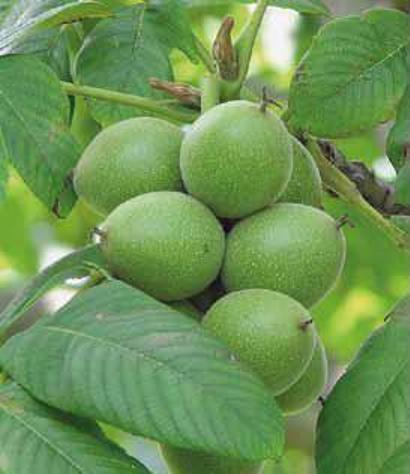

In central Russia, young shoots of Manchurian walnut may suffer from spring frosts
The kernel yield of ailantholist and heart-shaped nuts is 27–32% (and even 40–50%), is extracted whole or in large pieces, has a pleasant taste. They ripen quite late - at the end of September - the first half of October in Tula, Moscow, St. Petersburg, in Voronezh - in the middle of September. Frost resistance is high, but depends on the place of planting.Mature trees give 15-18 kg of kernel per tree (20-25 years), which allows, for example, to provide for a family of 4 people (the recommended rate is 3.7 kg per person per year). Manchurian walnut ripens from late August (early maturing forms) to early October (late maturing).
Such species as Manchurian walnut, heart-shaped, ailantholist (Siebold) are promising for regions with a cool climate (the sum of active temperatures above 10 ° C - 1800-2000 °). For example, they bear fruit annually in the conditions of St. V.L. Komarova.
"Americans" took root in Russia
Black and rocky nuts are of particular interest. The homeland of these species is North America, where, according to American scientists and walnut growers, they can withstand temperatures down to -39 ... -41 ° C. While they are not widespread north of 50 ° N. However, we met individual fruit-bearing trees in Voronezh, Tula, Moscow and even in St. Petersburg, which indicates the high plasticity of this culture.
Under the conditions of Tula, the black walnut opens its leaves in May, blooms in late May - early June, which allows it to avoid late spring frosts. It is important that this species differs, more than that of the walnut, frost and winter hardiness, trees withstand severe frosts at -35 ... -38.5 ° C. The crown of the tree is highly decorative, the leaves have a pleasant balsamic smell. Begins fruiting in the 7-9th year, ripens in early October. The kernel is small (14–40%), but it is much easier to extract than from the Manchurian, gray, Siebold walnut. This nut is undemanding to soils - it easily adapts to various types, including heavy loam.
The kernel of black walnut contains up to 30% of high-value protein, which is more than all other nut-bearing ones.
In taste, it surpasses many varieties of walnuts and other types, second only to pecans. Black walnut oil has a rich mineral and chemical composition and is used in food supplements.
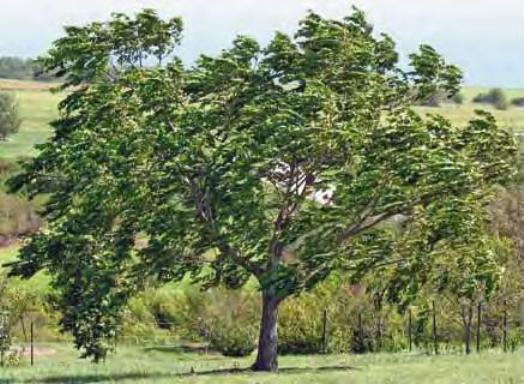

Gray walnut, named after the gray tinge of the branches, has exceptional frost resistance, but the kernels are difficult to remove from the shell
Another promising species is the American pecan nut, or Illinois hazel (Carya Illinoensis), we have been breeding it since 1999. In the Moscow region, the culture can withstand frosts down to -35. -37 ° C. But for full-fledged fruiting, this nut needs more heat (the sum of temperatures above 10 ° C is at least 2550.2700 ° C). The northernmost fruiting pecans in Russia, according to our observations, grow in Krasnodar, Rostov, in the south of the Krasnodar Territory.
A wild relative of pecan - heart-shaped hazel - feels great in St. Petersburg, Moscow, Tula, withstanding frosts up to -38.5 ° C without damage. But this culture has a drawback - bitter fruits.
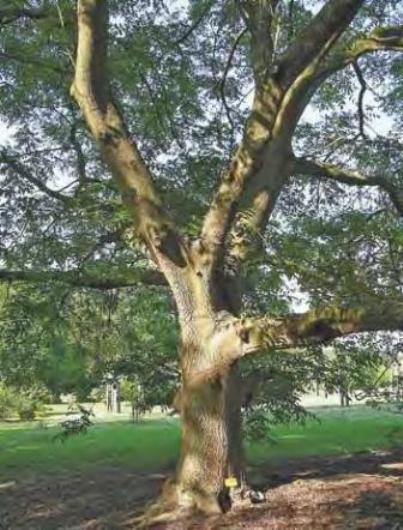

Rocky walnut is less frost-resistant. Fruits are small with a very strong shell
NUTS are more nutritious than meat
Walnut kernels contain up to 80% fatty oil, 70–93% consisting of polyunsaturated fatty acids, up to 25–30% complete vegetable protein with all essential amino acids, up to 30% carbohydrates, provitamin A, vitamins C, P, K, E and group B, macro- and microelements, including iodine, selenium and zinc. Polyunsaturated fatty acids prevent the development of atherosclerosis, and essential (essential) amino acids exclude the possibility of protein starvation of the body.
In terms of its nutritional value, the kernel of a nut is superior to such food products as meat, chicken eggs, milk, bread, chocolate, etc.; only 400 g covers the daily calorie requirement of a person. In addition, the leaves contain rutin, which normalizes blood pressure, tocopherol, which has a beneficial effect on the reproduction system of generations, and vitamin K, which strengthens blood vessels and capillaries. Green leaves, unripe fruits, pericarp are a source of vitamin C (up to 3000 mg /%, essential oils, juglone).
FOR URBAN GARDENING
Frost-resistant species and hybrids of walnut are promising for urban landscaping. So, a few years ago in Tula, we planted our nuts at 3 sites: in a children's wellness center (10 black, 5 walnuts and 5 hybrid nuts), on the territories of a private skating rink in the District (20 black nuts) and a Catholic church (4 early-growing walnuts and 1 black walnut). These plants have withstood the harsh winters of 2009–2010 and 2010–2011. no damage and look good.
Planting and leaving
For planting, planting pits are prepared with a width of up to 70 cm.A depth of 50 cm is enough, since the root system of the nut is superficial. Hazelnuts are not picky about the type of soil and grows well enough in any area. We fill the planting hole with humus and sand (3: 1), on sandy soils we add clay in the same ratio. Add 2 cups of dolomite flour, 60–70 g of complex mineral fertilizer and 2 cups of ash. Mix everything well. Before planting, we carefully inspect the seedlings with ACS: we cut off dry and broken roots. Then we soak the plants in a bucket in a solution of "Kornevin" or "Epin" for 6 hours. Saplings with ZKS are placed in the same solution for 1 hour. When planting, we gently straighten the roots and cover them with soil, compact it well and pour 2-3 buckets of water. To avoid breakage, we tie the seedlings to pegs. In grafted seedlings, in no case should the root collar be buried. Nuts of autumn planting in the first winter must be covered with a covering material such as "Lutrasil" (40 g / sq. M). It should be borne in mind that seedlings of spring planting require more frequent watering.
In the future, the care is normal - as for most fruit trees and shrubs. Young plants must be loosened and watered in a timely manner, to prevent a large number of weeds. It is advisable to mulch the root circle. With age, the need for these works disappears, since the trees grow quite strongly. Weeds under them hardly appear due to the wide and dense crown. It is recommended to apply rotted manure and wood ash under young plants in the spring.
It is very important to shape the plants, make regular pruning so that the crown does not thicken, shorten the longest branches, cut out those growing inside the bush. In the varieties that form the shoots, it is necessary to remove it regularly.
Of the pests, the nut weevil is very dangerous - wormy fruits clearly testify to this. In order to avoid weevil attacks, spring treatment with any insecticides and thorough cleaning of fallen damaged nuts in the fall are recommended. I did not observe any diseases on my plants. Powdery mildew is theoretically possible. If this happens, treat your plants with any powdery mildew fungicide. But, again, its appearance is unlikely.
The culture is very easy to grow, so we can safely recommend it both for amateur gardens and for urban landscaping, squares and parks.

